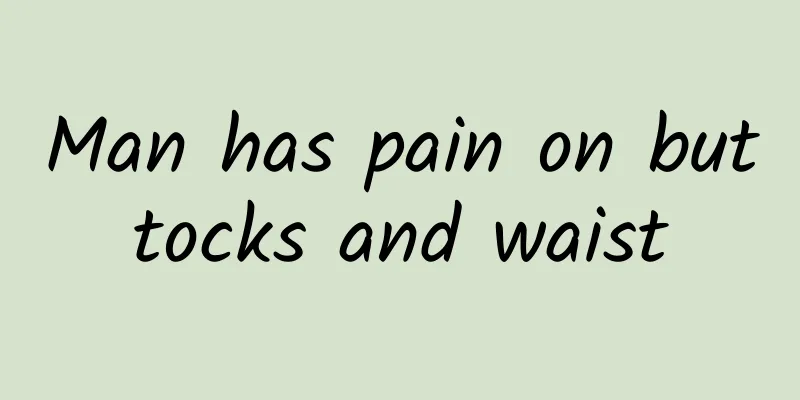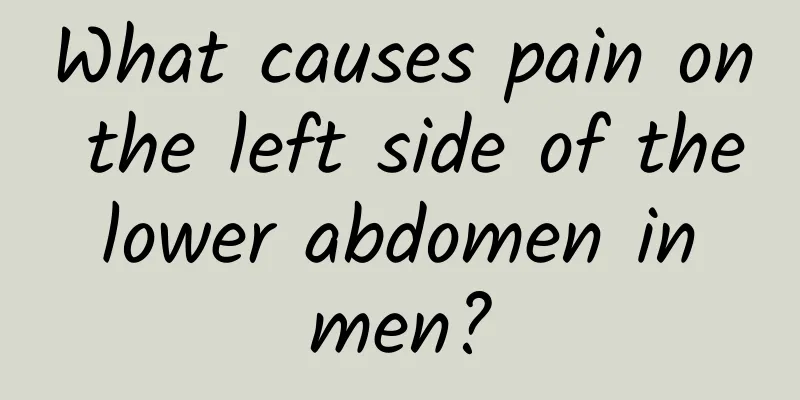Man has pain on buttocks and waist

|
Pain in the buttocks and lower back of men is one of the typical symptoms of sciatica. As people's work pressure increases, more and more office white-collar workers need to sit in front of computers for a long time to work. If you maintain a certain posture for a long time, it is easy to cause sciatica. There are many symptoms of sciatica. Below, we will introduce the symptoms of sciatica in detail. You can use these symptoms to preliminarily determine whether you have sciatica. 1. General symptoms (1) The pain is mainly limited to the sciatic nerve distribution area, the back of the thigh, the posterior and lateral side of the calf and the foot. Patients with severe pain may adopt a unique posture: bending the waist, bending the knees, and standing on the toes. If the lesion is located at the nerve root, the pain will be aggravated when the pressure in the spinal canal increases (coughing, exerting force). (2) The degree of muscle weakness can vary greatly depending on the cause, location of the lesion, and degree of damage. The muscles innervated by the sciatic nerve may become completely or partially weak or paralyzed. (3) There may or may not be tenderness along the sciatic nerve trunk at the sciatic notch. (4) There is a positive sciatic nerve traction sign, Lasegue sign and its equivalent. The presence of this sign is often parallel to the severity of the pain. This sign can disappear after local anesthesia of the sciatic nerve root or nerve trunk. (5) The Achilles tendon reflex decreases or disappears, but the knee reflex may increase due to stimulation. (6) There may be a decrease or disappearance of various sensations in the area innervated by the sciatic nerve, including a decrease in the vibration sensation of the lateral ankle, or there may be very mild sensory impairment. 2. Sciatica It is often accompanied by various types of infections and systemic diseases, such as upper respiratory tract infections. Because the sciatic nerve is relatively superficial, it is easy to develop sciatica when exposed to moisture or cold. When sciatica occurs due to systemic diseases, attention should be paid to the presence of complications such as collagen disease and diabetes. Most sciatica is unilateral, not accompanied by waist or back pain; the pain is usually persistent, but can also be paroxysmal, and the symptoms worsen when the spinal canal pressure increases, and can also radiate along the sciatic nerve path. Sciatic nerve shaft tenderness is obvious, and gastrocnemius tenderness exists; pain and muscle weakness are often not parallel, and the pain is generally severe, while muscle weakness is often not obvious. In the acute stage, it is difficult to judge motor function due to pain, and foot drop and gastrocnemius and anterior tibial muscle atrophy can be detected; Achilles tendon reflex is reduced or absent, but Achilles tendon reflex can also be normal, knee reflex is normal, and superficial sensory impairment is obvious. 3. Secondary sciatica (1) Lumbar disc herniation is the most common cause of sciatica, which often occurs at L4-5 and L5-S1. About 1/3 of cases have a history of acute lumbar trauma. Most patients are between 20 and 40 years old. The clinical characteristics are back pain for several weeks or months, followed by sciatica in one lower limb. In addition to the general symptoms of sciatica, physical examination also shows tension in the back muscles, limited lumbar movement, scoliosis, and tenderness of the spinous processes at the site of the lesion. (2) Lumbar osteoarthritis is more common in people over 40 years old. It has a subacute to chronic onset and is often accompanied by a history of long-term low back pain. It makes it difficult to stand up after sitting for a long time and difficult to sit down after standing for a long time. Clinically, it can manifest as sciatica on one or both sides and symptoms in the lower back. (3) Congenital malformations of the lumbar sacral spine include lumbar sacralization, sacral lumbarization, and spina bifida occulta. In addition to sciatica, the latter often has a history of urine leakage. Physical examination often shows foot deformities and lumbar skin abnormalities, such as a small depression behind the anus and a small hemangioma on the midline of the sacrum. This often objectively and accurately indicates the area where the lamina has not healed. (4) Sacroiliac arthritis is commonly caused by rheumatoid arthritis or tuberculous lesions. When there is exudation and damage to the joint capsule, it will stimulate the L4-5 nerve trunks, and some patients may have symptoms of sciatica. |
<<: What happens if there is too much sperm?
>>: Will pearly papules heal on their own?
Recommend
Health tips for men after 30
We all know that men in their 30s are at the peak...
Symptoms after one month of quitting smoking. Smokers need to be mentally prepared
When long-term smokers are ready to quit smoking,...
What is the fastest way for men to lose weight?
Many boys want to slim down their legs, because m...
Can men's thong underwear be worn for a long time?
T-backs are a kind of necessary underwear that gi...
White vinegar is the best facial cleanser?
With the improvement of living conditions, enviro...
Summer health: the most effective kidney-tonifying recipe
In the hot summer, people tend to be listless. Se...
How long does drinking alcohol affect sperm?
Healthy sperm is a prerequisite for pregnancy. So...
Left testicular pain in men
The testicular health of male friends actually ne...
Can therapeutic yoga treat gynecological inflammation?
More and more people like to do yoga, especially ...
What to eat for erectile hardness
In daily sexual life, if the penis is not hard en...
What causes foamy urine?
There are many reasons for foamy urine, such as e...
A 35-year-old male patient had chest tightness for 1 month
More and more young people often experience chest...
Prostate Exercise Methods Pictures
Today's life is fast-paced, material conditio...
Redness and swelling around the glans penis
The swelling of the glans penis surface is consid...
Is impotence due to Yin deficiency or Yang deficiency?
I believe everyone must be familiar with the symp...









